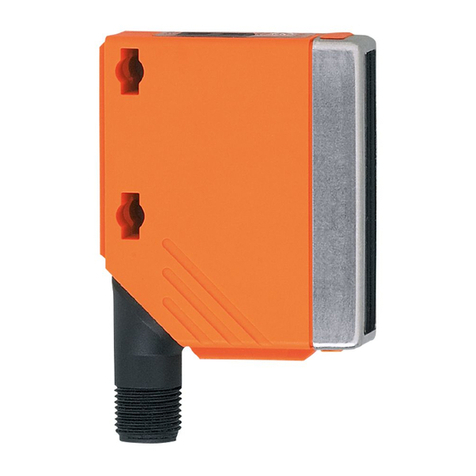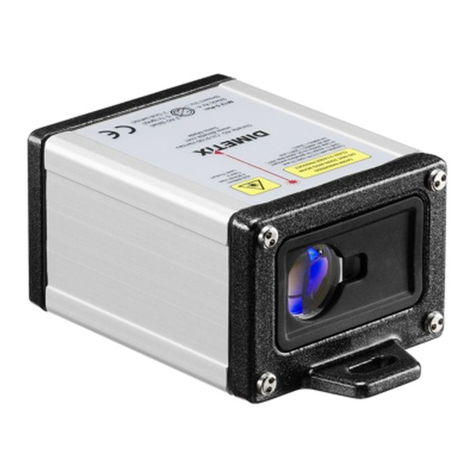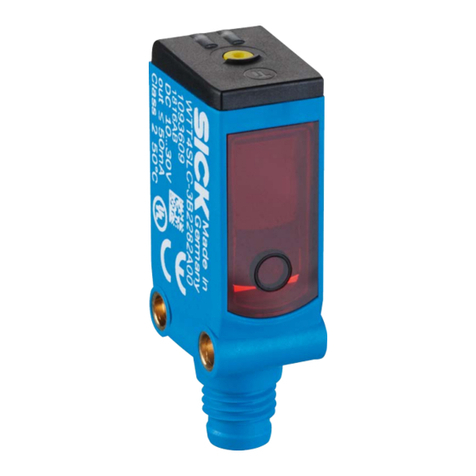Sea-Bird Electronics SBE 63 User manual

SBE 63
Digital Optical Dissolved Oxygen Sensor
User’s Manual
Sea-Bird Electronics, Inc.
13431 NE 20th Street
Bellevue, Washington 98005 USA
Telephone: 425/643-9866
Fax: 425/643-9954 Manual Version #005, 04/15/13
E-mail: seabird@seabird.com Firmware Version 3.0.1 and later
Website: www.seabird.com SeatermV2 version 2.2.6 and later
Optional Sensor Mount for
installation on SeaCAT CTD
SBE 63 DO Sensor
(plastic housing)
SBE 63 DO Sensor
(titanium housing)

2
Limited Liability Statement
Extreme care should be exercised when using or servicing this equipment. It should be used or serviced
only by personnel with knowledge of and training in the use and maintenance of oceanographic
electronic equipment.
SEA-BIRD ELECTRONICS, INC. disclaims all product liability risks arising from the use or servicing
of this system. SEA-BIRD ELECTRONICS, INC. has no way of controlling the use of this equipment
or of choosing the personnel to operate it, and therefore cannot take steps to comply with laws
pertaining to product liability, including laws which impose a duty to warn the user of any dangers
involved in operating this equipment. Therefore, acceptance of this system by the customer shall be
conclusively deemed to include a covenant by the customer to defend, indemnify, and hold SEA-BIRD
ELECTRONICS, INC. harmless from all product liability claims arising from the use or servicing of
this system.

Manual revision 005 Declaration of Conformity SBE 63
3
Declaration of Conformity

Manual revision 005 Table of Contents SBE 63
4
Table of Contents
Limited Liability Statement ............................................................................2
Declaration of Conformity ..............................................................................3
Table of Contents .............................................................................................4
Section 1: Introduction ....................................................................................5
About this Manual ............................................................................................ 5
Quick Start ........................................................................................................ 5
Unpacking SBE 63............................................................................................ 6
Section 2: Description of SBE 63 ....................................................................7
System Description ........................................................................................... 7
Specifications.................................................................................................... 8
Dimensions and Connector ............................................................................... 9
Section 3: Preparing SBE 63 for Deployment .............................................10
Software Installation ....................................................................................... 10
Power and Communications Test ................................................................... 10
Test Setup .................................................................................................10
Test ...........................................................................................................11
Section 4: Deploying and Operating SBE 63 ...............................................16
Sampling Modes ............................................................................................. 16
Polled Sampling........................................................................................16
Autonomous Sampling .............................................................................18
Command Descriptions................................................................................... 20
Data Formats................................................................................................... 27
Deployment..................................................................................................... 29
Integration with SeaCAT CTD
(SBE 16plus V2, 16plus-IM V2, or 19plus V2) .......................................29
Integration with MicroCAT CTD
(SBE 37-SMP-ODO, 37-IMP-ODO, 37-SIP-ODO).................................30
Recovery ......................................................................................................... 31
Section 5: Routine Maintenance and Calibration .......................................32
Corrosion Precautions..................................................................................... 32
Connector Mating and Maintenance ............................................................... 32
Sensor Maintenance ........................................................................................ 33
Sensor Calibration........................................................................................... 34
Section 6: Troubleshooting............................................................................35
Problem 1: Unable to Communicate with SBE 63.......................................... 35
Problem 2: Unreasonable Data ....................................................................... 35
Glossary ..........................................................................................................37
Appendix I: Functional Description .............................................................38
Appendix II: Installation/Removal from Optional Sensor Mount ............42
Appendix III: Command Summary .............................................................43
Appendix IV: Replacement Parts.................................................................44
Appendix V: Manual Revision History ........................................................45
Index................................................................................................................46

Manual revision 005 Section 1: Introduction SBE 63
5
Section 1: Introduction
This section includes a Quick Start procedure, and photos of a standard
SBE 63 shipment.
About this Manual
This manual is to be used with the SBE 63 Digital Optical Dissolved Oxygen
Sensor. It is organized to guide the user from installation through operation
and data collection. We’ve included detailed specifications, command
descriptions, maintenance and calibration information, and helpful notes
throughout the manual.
Sea-Bird welcomes suggestions for new features and enhancements of our
products and/or documentation. Please contact us with any comments or
Monday through Friday, 0800 to 1700 Pacific Standard Time (1600 to 0100
Universal Time) in winter and 0800 to 1700 Pacific Daylight Time (1630 to
0000 Universal Time) the rest of the year.
Quick Start
Follow these steps to get a Quick Start using the SBE 63.
The manual provides step-by-step details for performing each task:
1. Perform pre-check procedures (see Section 3: Preparing SBE 63
for Deployment):
A. Test power and communications.
2. Deploy the SBE 63 (see Section 4: Deploying and Operating SBE 63):
A. Establish setup and operating parameters.
B. Check status (GetSD) and calibration coefficients (GetCC) to verify
setup.
C. Install I/O cable connector and locking sleeve, and mount SBE 63.
D. Deploy SBE 63.

Manual revision 005 Section 1: Introduction SBE 63
6
Unpacking SBE 63
Shown below is a typical SBE 63 shipment.
Software, and Electronic Copies of
Software Manuals and User Manual
OR
Optional sensor mount for installation on
SBE 16plus V2, 16plus-IM V2, or 19plus V2
SBE 63 (plastic housing)
SBE 63 (titanium housing)

Manual revision 005 Section 2: Description of SBE 63 SBE 63
7
Section 2: Description of SBE 63
This section describes the functions and features of the SBE 63, including
specifications and dimensions.
System Description
The SBE 63 is an easy-to-use, light, compact instrument ruggedly made of
titanium and other low-maintenance (plastic) materials, designed to be
incorporated into oceanographic sensing systems at depths up to 600 or
7000 meters (1960 or 23,000 feet). Commands sent to the SBE 63 provide
status display, data acquisition setup, and diagnostic tests. Its data is
telemetered by its internal, 3-wire, RS-232C interface. The SBE 63 has no
sample memory or internal batteries.
The SBE 63 samples in two modes:
•Autonomous sampling –The SBE 63 samples at pre-programmed
intervals of 1 to 32,767 seconds. It can be set to average up to
255 measurements per sample, and transmits the averaged data.
The SBE 63 can be programmed to begin autonomous sampling when
power is applied or on command.
•Polled sampling – On command, the SBE 63 takes one sample and
transmits the data.
The SBE 63 outputs raw or converted (ASCII engineering units) data in one of
a number of formats, for compatibility with existing CTDs.
Each SBE 63 is calibrated individually in a temperature-controlled bath.
Bath temperatures are varied at each of 4 oxygen values, providing a
comprehensive 24-point calibration. Two reference sensors in each bath are
standardized against Winkler titrations. Response time tests are conducted on
each sensor, using gas. Salinity and pressure impacts on sensor response are
each checked at two separate points.
The SBE 63 is designed for use in a CTD's pumped flow path. Water does not
freely flow through the plumbing between samples, allowing anti-foul
concentration inside the system to maintain saturation and eliminating
exposure of the sensor to light, maximizing bio-fouling protection. The
elapsed time between the CTD and associated oxygen measurement is easily
quantified, and corrected for in post-processing.
Configuration options:
•With the optional sensor mount, the SBE 63 can be plugged into the
RS-232 auxiliary sensor connector of the SBE 16plus V2, 16plus-IM V2,
or 19plus V2 SeaCAT CTD. Configuration choices include a 600-meter
plastic housing or 7000-meter titanium housing, and an XSG or
wet-pluggable MCBH connector.
•The SBE 63 with a 600-meter plastic or 7000-meter titanium housing can
be integrated into an SBE 37 MicroCAT (37-IMP-ODO, 37-SMP-ODO,
or 37-SIP-ODO).
•On an SBE 41 (Argo float) CTD, the SBE 63 has a 7000-meter titanium
housing. The SBE 63 is physically integrated with the CTD; however,
electronic operation of the SBE 63 requires an RS-232 interface in the
float controller.
SBE 63 (plastic housing)
SBE 63 (titanium housing)

Manual revision 005 Section 2: Description of SBE 63 SBE 63
8
The SBE 63 is supplied with a powerful Windows software package,
Seasoft V2, which includes:
•SeatermV2 - terminal program for communication and data retrieval.
SeatermV2 is a launcher, and launches the appropriate terminal program
for the selected instrument (Seaterm232 for RS-232 instruments such as
this SBE 63).
•Seasave V7 – program for acquiring, converting, and displaying real-time
or archived raw data.
•SBE Data Processing – program for calculation and plotting of
conductivity, temperature, pressure, auxiliary sensor data (such as
dissolved oxygen), and derived variables such as salinity and sound
velocity.
Specifications
Measurement
Range
120% of surface saturation in all natural waters,
fresh and salt
Initial Accuracy Larger of ±3 µmol/kg (equivalent to 0.07 ml/L or 0.1 mg/L)
or ±2%
Resolution 0.2 µmol/kg
Sample-Based
Drift < 1 µmol/kg / 100,000 samples (20 °C)
Response Time
(
τ
, 63%
response)
< 6 sec (20 °C)
Sampling
Speed 1 Hz (1 sample/sec)
Calibration
Each sensor fully and individually calibrated
(0 – 450 µmol/kg oxygen, 0 – 30 °C, 0 – 35 psu,
0 – 2000 dbars)
8 coefficients plus 4 temperature compensation
coefficients
Input Power 6 - 24 VDC, 35 mA (0.08 J/sample)
Output Signal RS-232, 600-115,200 baud (user-selectable),
8 data bits, no parity, 1 stop.
Depth rating,
housing, and
weight (in air)
Sensor:
600 m (1960 ft) plastic housing: 245 g (0.54 lbs)
7000 m (16,400 ft) titanium housing: 270 g (0.60 lbs)
Optional sensor mount for use with
SBE 16plus V2, 16plus-IM V2, or 19plus V2:225 g (0.50 lbs)
Notes:
•Help files provide detailed
information on the software.
•A separate software manual on CD-
ROM contains detailed information
on the setup and use of Seasave V7
and SBE Data Processing.
•Sea-Bird supplies the current
version of our software when you
purchase an instrument. As software
revisions occur, we post the revised
software on our FTP site. See our
website (www.seabird.com) for the
latest software version number, a
description of the software changes,
and instructions for downloading the
software from the FTP site.

Manual revision 005 Section 2: Description of SBE 63 SBE 63
9
Dimensions and Connector
SBE 63 sensor installed in sensor
mount, for use with RS-232
auxiliary sensor channel on CTD
(SBE 16plus V2, 16plus-IM V2, or
19plus V2 SeaCAT)
SBE 63 sensor for integration with
SBE 37 ODO MicroCAT (600 m or 7000 m housing), or
SBE 41 (Argo) CTD (7000 m housing)

Manual revision 005 Section 3: Preparing SBE 63 for Deployment SBE 63
10
Section 3:
Preparing SBE 63 for Deployment
This section describes installing software and testing power and
communications.
Software Installation
Seasoft V2 was designed to work with a PC running Windows XP service
pack 2 or later, Windows Vista, or Windows 7.
If not already installed, install SeatermV2 and other Sea-Bird software
programs on your computer using the supplied software CD:
1. Insert the CD in your CD drive.
2. Install software: Double click on SeasoftV2.exe. Follow the dialog box
directions to install the software. The installation program allows you to
install the desired components. Install all the components, or just install
SeatermV2, Seasave V7, and SBE Data Processing.
The default location for the software is c:\Program Files\Sea-Bird. Within that
folder is a sub-directory for each program.
Power and Communications Test
The power and communications test will verify that the system works,
prior to deployment.
Test Setup
1. Remove dummy plug (if applicable):
A. By hand, unscrew the locking sleeve from the SBE 63’s bulkhead
connector. If you must use a wrench or pliers, be careful not to
loosen the bulkhead connector instead of the locking sleeve.
B. Remove the dummy plug from the SBE 63’s I/O bulkhead connector
by pulling the plug firmly away from the connector.
2. Standard Connector - Install the I/O cable connector, aligning the raised
bump on the side of the connector with the large pin (pin 1 - common) on
the SBE 63 sensor mount. OR
MCBH Connector – Install the I/O cable connector, aligning the pins.
3. Connect the I/O cable connector to your computer’s serial port.
4. Connect the I/O cable connector’s red (+) and black (-) wires to a power
supply (6 – 24 VDC).
Notes:
•Help files provide detailed
information on the software.
•It is possible to use the SBE 63
without the SeatermV2 terminal
program by sending direct
commands from a dumb terminal or
terminal emulator, such as Windows
HyperTerminal.
•Sea-Bird supplies the current
version of our software when you
purchase an instrument. As software
revisions occur, we post the revised
software on our FTP site. See our
website (www.seabird.com) for the
latest software version number, a
description of the software changes,
and instructions for downloading the
software from the FTP site.
I/O cable
Locking sleeve
Note:
SBE 63 integrated with a MicroCAT
(37-SMP-ODO, IMP-ODO, SIP-ODO):
See the MicroCAT manual for
information on communicating with the
SBE 63 through the MicroCAT.

Manual revision 005 Section 3: Preparing SBE 63 for Deployment SBE 63
11
Test
1. Double click on SeatermV2.exe. The main screen looks like this:
SeatermV2 is a launcher. Depending on the instrument selected, it
launches Seaterm232 (RS-232 instruments), Seaterm485 (RS-485
instruments), or SeatermIM (inductive modem instruments).
2. In the Instruments menu, select SBE 63 Dissolved Oxygen Sensor.
Seaterm232 opens; the main screen looks like this:
•Menus – For tasks and frequently executed instrument commands.
•Send Commands window – Contains commands applicable to your
SBE 63. The list appears after you connect to the SBE 63.
•Command/Data Echo Area – Title bar of this window shows
Seaterm232’s current comm port and baud rate. Commands and the
SBE 63 responses are echoed here. Additionally, a command can be
manually typed or pasted (ctrl + V) here. Note that the SBE 63 must
be connected and awake for it to respond to a command.
•Status bar – Provides connection, script, and capture status
information.
Notes:
•You can use any terminal
program to set up the SBE 63;
set it to 8 data bits, no parity,
1 stop bit, and 9600 baud (default
SBE 63 baud rate). Instructions
here are for using SeatermV2.
•See SeatermV2’s Help files.
Note:
See Seaterm232’s Help files.
Capture
status
Status –
Connecting,
Ready, etc.
Status Bar
Command/Data Echo Area
Send Commands
Window
Menus

Manual revision 005 Section 3: Preparing SBE 63 for Deployment SBE 63
12
Following is a description of the menus:
Menu
Description
Equivalent Command*
File
•Load command file – opens selected .XML
command file, and fills Send Commands
window with commands
•Unload command file – closes command
file, and removes commands from Send
Commands window
•
Exit - Exit program.
—
Communications
•Connect – connect to comm port
•Disconnect – disconnect from
comm port
•Configure – Establish communication
parameters (comm port and baud rate).
•Disconnect and reconnect – may be useful
if SBE 63 has stopped responding
—
Command
•Abort – interrupt and stop SBE 63
response
•Send stop command
Remaining menu items are not applicable to
SBE 63
•(press Esc key)
•Stop
Capture
Capture SBE 63 responses on screen to file,
to save real-time data or use for diagnostics.
File has .cap extension.
Click Capture again to turn off capture.
Capture status displays in Status bar.
—
Upload
Not applicable to SBE 63
—
Tools
•Diagnostics log - Keep a diagnostics log.
•Convert .XML data file – not applicable to
SBE 63
•Send script – Send XML script to SBE 63.
May be useful if you have a number of
SBE 63s to program with same setup.
—
*See Command Descriptions in Section 4: Deploying and Operating
SBE 63.

Manual revision 005 Section 3: Preparing SBE 63 for Deployment SBE 63
13
3. If this is the first time Seaterm232 is being used, the Serial Port
Configuration dialog box displays:
Make the desired selections, and click OK.
4. Seaterm232 tries to automatically connect to the SBE 63. As it connects,
it sends GetHD and displays the response, which provides factory-set
data such as instrument type, serial number, and firmware version.
Seaterm232 also fills the Send Commands window with the correct list
of commands for your SBE 63.
If there is no communication:
A. In the Communications menu, select Configure. The Serial Port
Configuration dialog box appears. Select the Comm port and baud
rate for communication, and click OK. Note that the factory-set baud
rate is documented on the Configuration Sheet. .
B. In the Communications menu, select Connect (if Connect is grayed
out, select Disconnect and reconnect). Seaterm232 will attempt to
connect at the baud specified in Step A, but if unsuccessful will then
cycle through all other available baud rates.
C. If there is still no communication, check cabling between the
computer and SBE 63, and try to connect again.
D. If there is still no communication, repeat Step A with a different
comm port, and try to connect again.
After Seaterm232 displays the GetHD response, it provides an S> prompt
to indicate it is ready for the next command.
Note:
Seaterm232’s baud rate must be the
same as the SBE 63 baud rate (set
with SetBaud=). Baud is factory-set
to 9600, but can be changed by the
user (see Command Descriptions in
Section 4: Deploying and Operating
SBE 63). Other communication
parameters – 8 data bits, 1 stop bit,
and no parity – cannot be changed.
Computer COM port and baud rate for
communication between computer and
SBE 63. Seaterm232 tries to connect at
this baud rate, but if unsuccessful will
cycle through all available baud rates.
Update COM Port pulldown to
include connected USB ports.

Manual revision 005 Section 3: Preparing SBE 63 for Deployment SBE 63
14
Taking a look at the Send Commands window:
You can use the Send Commands window to send commands, or simply type
the commands in the Command/Data Echo area if desired.
Click on desired command
description in list.
Help box describes
selected command in more
detail.
Enter any command
arguments (such as
desired output format) in
this box.
Click Execute when ready
to send selected
command.
This box
shows selected
command.

Manual revision 005 Section 3: Preparing SBE 63 for Deployment SBE 63
15
5. Display SBE 63 setup and hardware information by typing GetHD and
pressing the Enter key. The display looks like this:
<HardwareData DeviceType = 'SBE063' SerialNumber = '0013'>
<Manufacturer>Sea-Bird Electronics, Inc.</Manufacturer>
<FirmwareVersion>3.0.1</FirmwareVersion>
<FirmwareDate>Apr 9 2013 10:30:28</FirmwareDate>
<CommandSetVersion>1.2</CommandSetVersion>
<MFGDate>04142</MFGDate>
<PCBAssembly>41755</PCBAssembly>
<PCBSerialNum>00013</PCBSerialNum>
<PCBAssembly>41756</PCBAssembly>
<PCBSerialNum>00013</PCBSerialNum>
<FilmSerialNum>00077</FilmSerialNum>
<Supply Voltage>8.63</Supply Voltage>
<LoaderVersion>SBE 63 FirmwareLoader V 1.0</LoaderVersion>
<CalibrationDate>04826</CalibrationDate>
<HardwareConfig>
<BaudRate>009600</BaudRate>
<BlueOnTime>0000000</BlueOnTime>
<SampleAvg>002</SampleAvg>
<SampleInterval>00004</SampleInterval>
<BootDelay>001</BootDelay>
<OutFormat>01</OutFormat>
<AnalogGain>2</AnalogGain>
<AnalogOffset>00</AnalogOffset>
<AutoRun>0</AutoRun>
<BlueTupdate>0</BlueTupdate>
<SerPause>1</SerPause>
<Echo>1</Echo>
<Flags>0x0023</Flags>
</HardwareConfig>
</HardwareData>
6. Command the SBE 63 to take a sample by typing TS and pressing the
Enter key. The display looks like this (if SBE 63 is set up with
SetFormat=1):
16.411,0.550736,5.980,25.0011
where 16.411 = raw phase delay
0.550736 = raw thermistor voltage
5.980 = converted oxygen in ml/l
25.0011 = temperature in deg C
The SBE 63 is ready for programming and deployment.

Manual revision 005 Section 4: Deploying and Operating SBE 63 SBE 63
16
Section 4: Deploying and Operating SBE 63
This section provides instructions for deploying the SBE 63. It includes:
•Sampling modes, including example sets of commands
•Command descriptions
•Data output formats
•Deployment
•Recovery
Sampling Modes
The SBE 63 has two sampling modes for obtaining data:
•Polled Sampling
•Autonomous Sampling
Shown below are descriptions and examples of the two sampling modes. Note
that the SBE 63’s response to each command is not shown in the examples.
Review the operation of the sampling modes and the commands described in
Command Descriptions before setting up your system.
Polled Sampling
On command (TS or TSR), the SBE 63 takes one sample of data and transmits
the data.
Examples continued on next page
Example 1: Polled Sampling (user input in bold).
Set up to wait for a command upon power up (SetAutoRun=0). Set up to
echo commands (SetEcho=1), output converted oxygen and temperature
data (SetFormat=0), and average 2 measurements/sample (SetAvg=2).
Verify setup with status (GetHD) command. Remove power.
(Apply power, then select Connect in Seaterm232’s Communications
menu to connect and wake up.)
S>SETAUTORUN=0
S>SETECHO=1
S>SETFORMAT=0
S>SETAVG=2
S>GETHD (to verify setup)
(Remove power.)
When ready to take a sample (repeat as desired): apply power, establish
communications with SBE 63, command it to take a sample and output
data in format established with SetFormat=, and remove power.
(Apply power, then select Connect in Seaterm232’s Communications
menu to connect and wake up.)
(Before first sample, click Capture menu to capture data to a file –
Seaterm232 requests file name for data to be stored.)
S>TS
(Remove power.)
Notes:
•Sea-Bird ships the SBE 63 with
SetAutoRun=0 (it will not
automatically start sampling when
power is applied). If you previously
sent SetAutoRun=1 (it
automatically started sampling
when power was applied), press the
Esc key to stop sampling. You will
then be able to send commands to
change the setup.
•SBE 63 response to commands is
not shown in examples.
Note:
Separate software manuals and
Help files contain detailed
information on installation, setup,
and use of Sea-Bird’s software.

Manual revision 005 Section 4: Deploying and Operating SBE 63 SBE 63
17
Example 2: Polled Sampling with SBE 16plus V2 (user input in bold).
Set up to wait for a command upon power up (SetAutoRun=0). Set up to
echo commands (SetEcho=1), average 2 measurements per output sample
(SetAvg=2), and output data in a format compatible with 16plus V2
(SetFormat=1). Set SBE 63 baud rate to same baud as 16plus V2 (assume
9600 baud for this example). Verify setup with status (GetHD) command.
Remove power.
(Apply power to SBE 63, then select Connect in Seaterm232’s
Communications menu to connect to and wake up SBE 63.)
S>SETAUTORUN=0
S>SETECHO=1
S>SETAVG=2
S>SETFORMAT=1
S>SETBAUD=9600 (get message to re-enter baud)
SB>SETBAUD=9600
(In Seaterm232’s Communications menu, select Configure. Change baud
to 9600 and click OK. In Seaterm232’s Communications menu, select
disconnect and reconnect. You will now be communicating at new baud).
S>GETHD (to verify setup)
(Remove power from SBE 63.)
When ready to begin sampling: Connect SBE 63 to 16plus V2 RS-232
auxiliary sensor connector. Start autonomous sampling in 16plus V2 (see
16plus V2 manual). Each time SBE 16plus V2 takes a measurement, it
applies power to and requests a sample from SBE 63 using TS command.
When ready to stop sampling: Stop autonomous sampling in 16plus V2.
Example 3: Polled Sampling with SBE 41 (Argo float) CTD that is not
making continuous oxygen measurements (user input in bold).
Set up to wait for a command upon power up (SetAutoRun=0). Set up to
echo commands (SetEcho=1), output raw and converted oxygen and
temperature data (SetFormat=1), to average 2 measurements/sample
(SetAvg=2). Verify setup with status (GetHD) command. Remove power.
(Apply power, then select Connect in Seaterm232’s Communications
menu to connect and wake up.)
S>SETAUTORUN=0
S>SETECHO=1
S>SETFORMAT=1
S>SETAVG=2
S>GETHD (to verify setup)
(Remove power.)
When ready to begin sampling: Connect SBE 63 to SBE 41. Each time
SBE 41 takes an oxygen measurement, it applies power to and requests a
sample from SBE 63 using TS command.
Note:
When using the SBE 63 with an
SBE 16plus V2, 16plus-IM V2, or
19plus V2 CTD, the following setup in
the SBE 63 is required:
•SetBaud= to the baud rate set in the
CTD (1200 for the 16plus-IM V2)
•SetEcho=1
•SetFormat=1
•SetAvg=1 to 16; recommended
value is 2
•SetAutoRun=0
In the CTD, set:
•Pump mode to 2 (PumpMode=2).
•Delay before sampling
(DelayBeforeSampling=) to
25 sec at 15 °C to 40 sec at 0 °C
(linear interpolation between those
values). This provides enough time
for the SBE 63 to equilibrate after
pumping begins, before the
measurement is made.
In the CTD, the interval between
samples (SampleInterval=) must be
greater than or equal to the sum of the
times required to sample. Total time is
affected by the following:
- Minimum time required for CTD to
take a sample (≈ 2.5 sec).
- Time required for integration of
optional Quartz pressure sensor
(ParosIntegration=).
- Time required for CTD to take and
average NCycles= samples; samples
are taken 0.25 sec apart.
- Delay after providing power to
external sensors before sampling
(DelayBeforeSampling=); described
above.
- Delay after sampling before turning
off power to external sensors
(DelayAfterSampling=).
For the 16plus-IM V2, commands are
preceded by #ii (ii=ID).

Manual revision 005 Section 4: Deploying and Operating SBE 63 SBE 63
18
Autonomous Sampling
The SBE 63 does not have an internal (standby) real-time clock. Therefore,
once you start autonomous sampling, power to the SBE 63 must remain on for
autonomous sampling to continue at the specified interval.
SetAutoRun defines how sampling starts:
SetAutoRun=
To Start
Autonomous
Sampling
To Stop Autonomous Sampling
0(default)
Send Start.
•Turn off power, or
•Click Esc (stopping this way allows
you to then send commands to
check/modify the setup), or
•Send Stop (stopping this way allows
you to then send commands to
check/modify the setup).
1Turn on power.
Examples continued on next page
Example 1: Autonomous Sampling Setup for SetAutoRun=0 (user
input in bold).
Set up to wait for a command upon power up (SetAutoRun=0).
Set up to echo commands (SetEcho=1), take and output a sample every
10 sec (SetInterval=10), averaging 2 measurements per output sample
(SetAvg=2), and output converted oxygen and temperature data
(SetFormat=0). Verify setup with status (GetHD) command. Remove
power.
(Apply power, then select Connect in Seaterm232’s Communications
menu to connect and wake up.)
S>SETAUTORUN=0
S>SETECHO=1
S>SETINTERVAL=10
S>SETAVG=2
S>SETFORMAT=0
S>GETHD (to verify setup)
(Remove power.)
When ready to begin sampling:
(Apply power, then select Connect in Seaterm232’s Communications
menu to connect and wake up.)
S>START
When ready to stop sampling:
(Send Stop, click Esc, or remove power.)
Note:
Sea-Bird ships the SBE 63 with
SetAutoRun=0 (it will not
automatically start sampling when
power is applied). If you send
SetAutoRun=1, turn power off and
then on again to start sampling, or
send Start.

Manual revision 005 Section 4: Deploying and Operating SBE 63 SBE 63
19
Example 2: Autonomous Sampling Setup for SetAutoRun=1 for use
with power supply and logger.
Set up to start sampling when power is applied (SetAutoRun=1).
Set up to echo commands (SetEcho=1), take samples at 10-sec intervals
(SetInterval=10), average 2 measurements per output sample
(SetAvg=2), output converted oxygen and temperature data
(SetFormat=0), and set the delay before sampling to the minimum value
(SetBootDelay=). Verify setup with status (GetHD) command. Remove
power.
(Apply power, then select Connect in Seaterm232’s Communications
menu to connect and wake up.)
S>SETAUTORUN=1
S>SETECHO=1
S>SETINTERVAL=10
S>SETAVG=2
S>SETFORMAT=0
S>SETBOOTDELAY=1
S>GETHD (to verify setup)
(Remove power from SBE 63.)
When ready to begin sampling, connect SBE 63 to power supply and data
logger.
(Apply power – SBE 63 automatically begins sampling at 10-sec
intervals.)
When ready to stop sampling:
(remove power.)

Manual revision 005 Section 4: Deploying and Operating SBE 63 SBE 63
20
Command Descriptions
This section describes commands and provides sample outputs.
See Appendix III: Command Summary for a summarized command list.
When entering commands:
•Input commands to the SBE 63 in upper or lower case letters and register
commands by pressing the Enter key (0xD).
•Commands to enable a parameter can be entered with the argument as
Y or 1 for yes, and N or 0 for no (for example, SetAutoRun=y and
SetAutoRun=1 are equivalent; both enable automatic starting of sampling
when power is applied).
•The SBE 63 sends Command failed: Unknown command
if an invalid command is entered.
•If the SBE 63 does not return an S> prompt after executing a command,
press the Enter or Esc key to get the S> prompt.
•If the SBE 63 is transmitting data and you want to stop it, press the Esc
key or send Stop. Alternatively, remove power.
•All commands that change setup take effect immediately, and are
committed to nonvolatile storage (SBE 63 retains settings when power is
removed).
Table of contents
Popular Accessories manuals by other brands

Treatlife
Treatlife SK50 instructions

Hally-Gally
Hally-Gally Piccolo 20.02.118 Assembly instructions
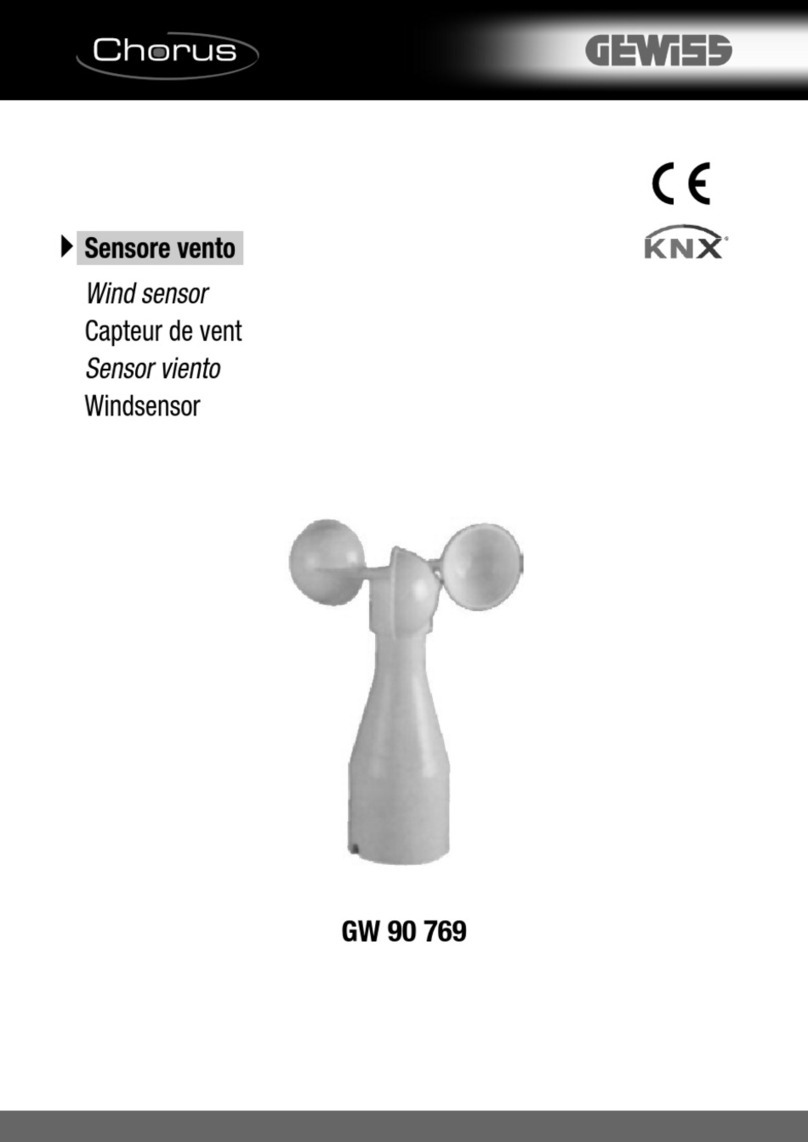
Gewiss
Gewiss Chorus GW 90 769 manual
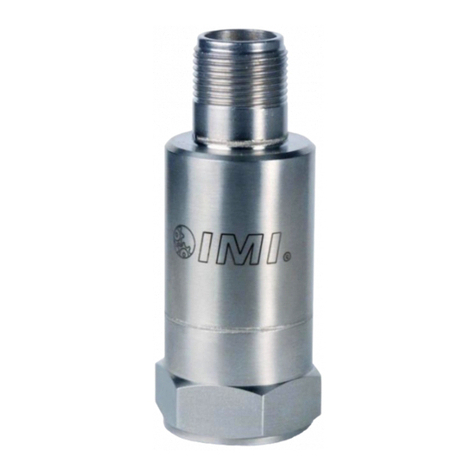
PCB Piezotronics
PCB Piezotronics IMI SENSORS 649A04 Installation and operating manual

Bumbleride
Bumbleride car seat cover Product guide
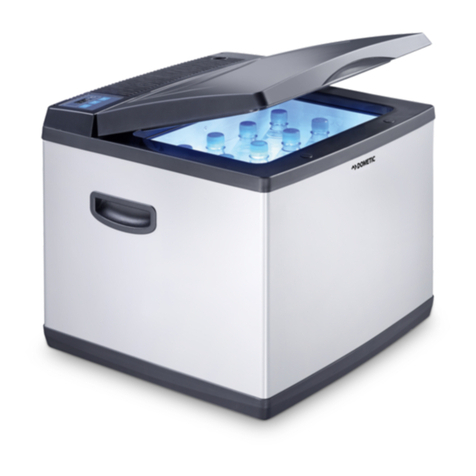
Dometic
Dometic CK40D Hybrid operating manual
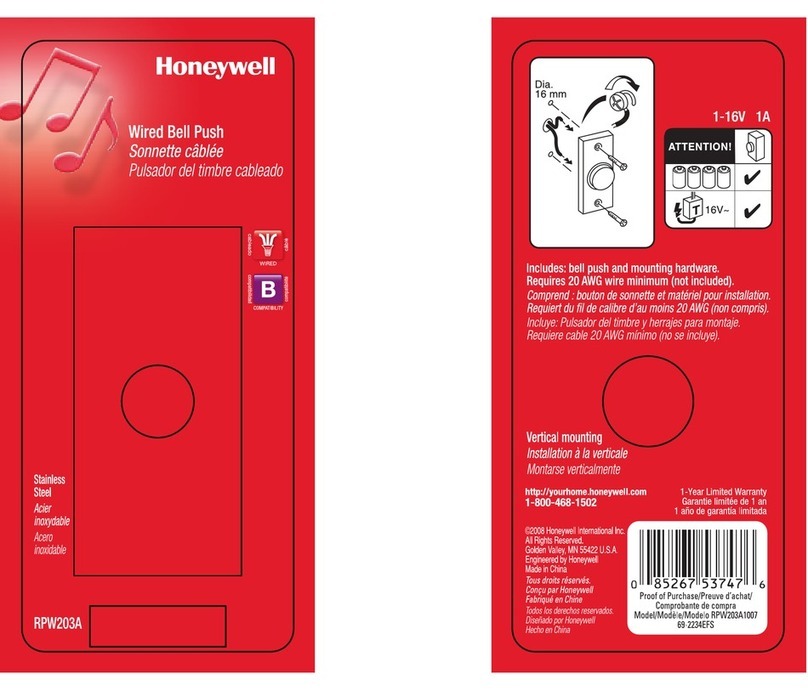
Honeywell
Honeywell RPW203A Mounting instruction
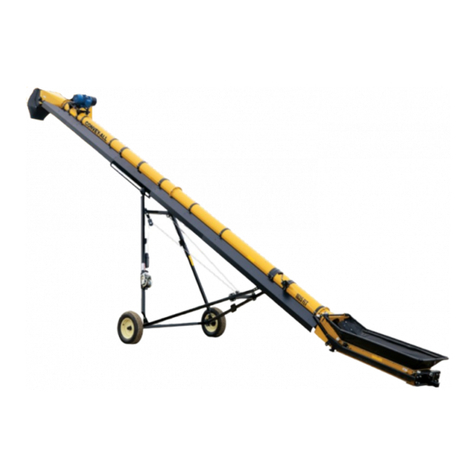
CONVEY-ALL
CONVEY-ALL 1635-FL Operator's manual
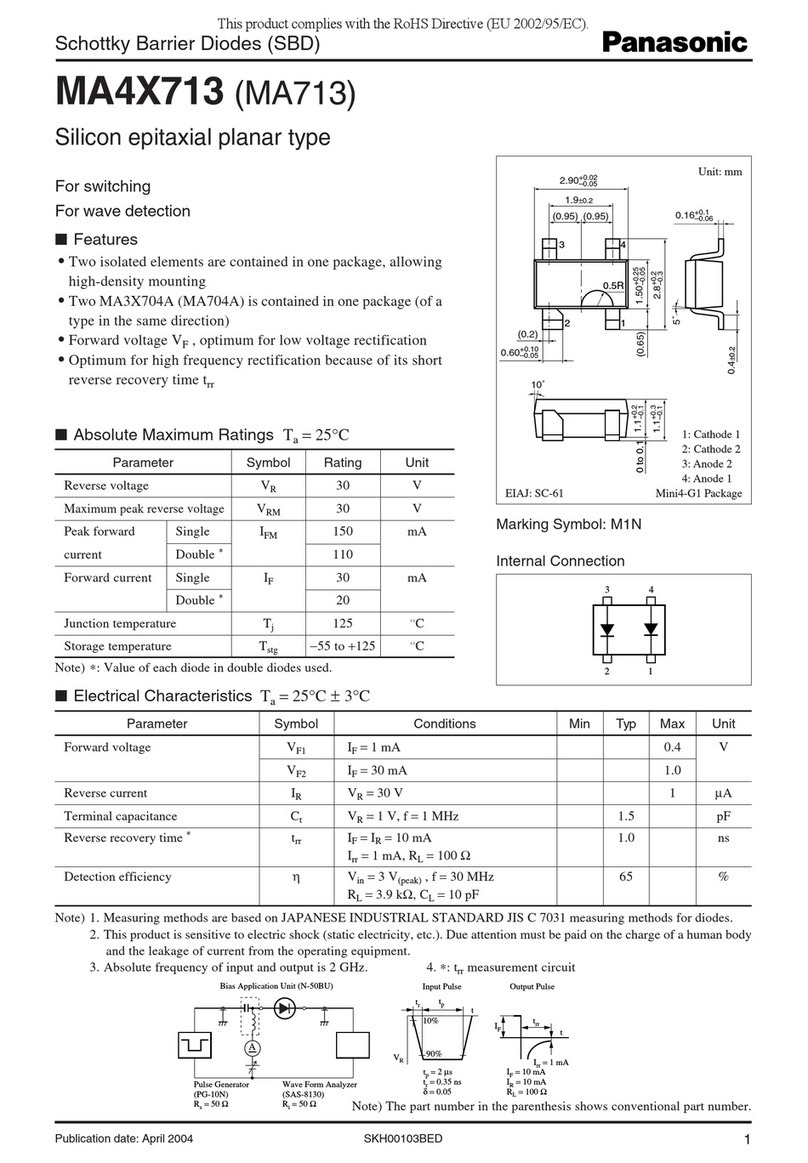
Panasonic
Panasonic MA4X713 (MA713) Specification sheet
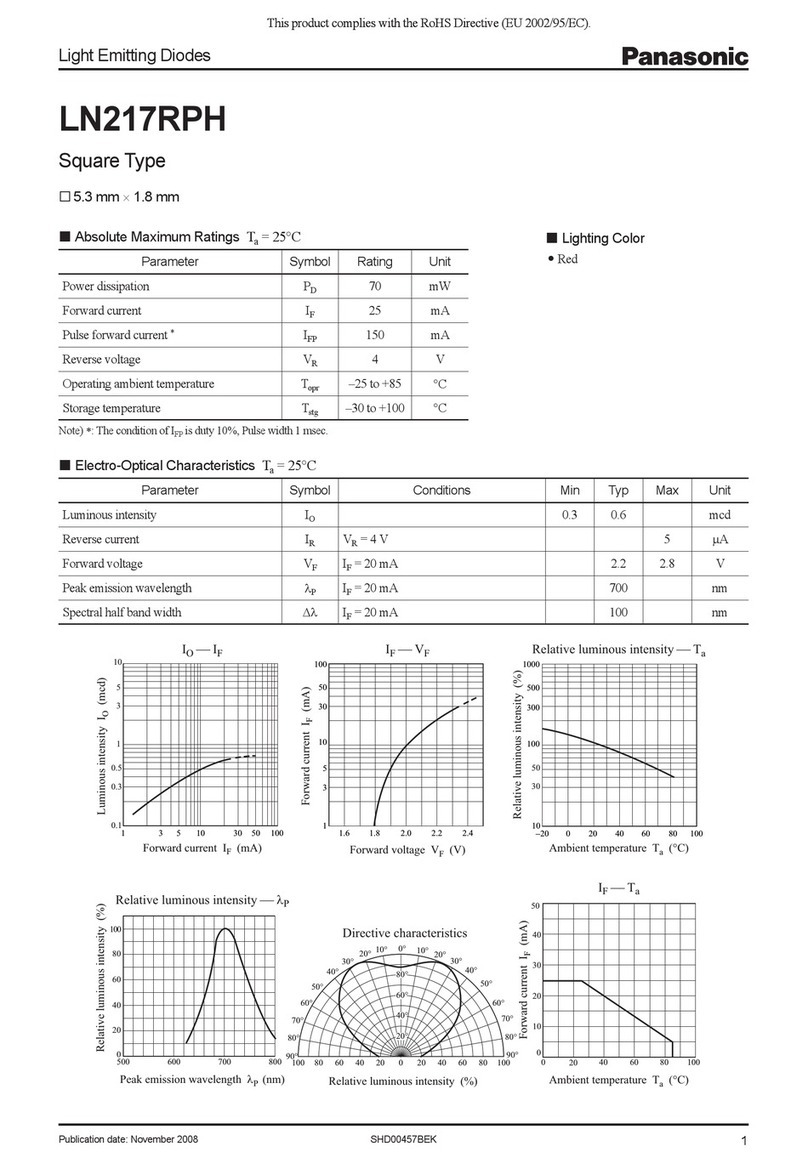
Panasonic
Panasonic Light Emitting Diodes LN217RPH Specifications
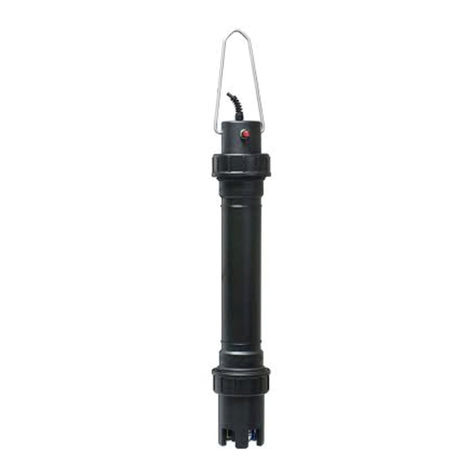
Endress+Hauser
Endress+Hauser ISEmax CAS40D operating instructions
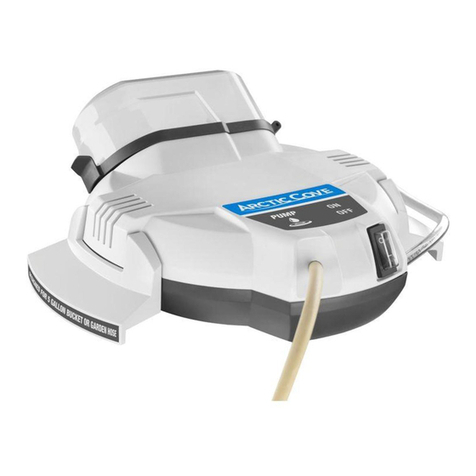
Arctic Cove
Arctic Cove COOL CAVE MPK1180 Operator's manual

